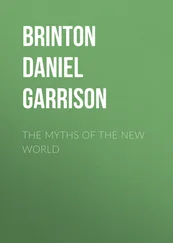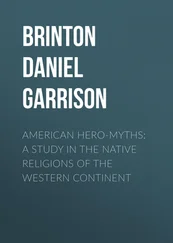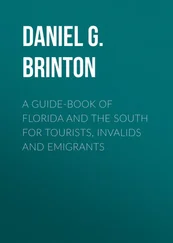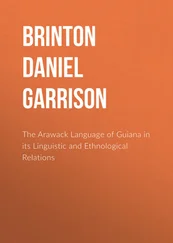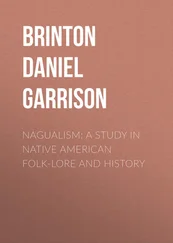Daniel Brinton - The Lenâpé and their Legends
Здесь есть возможность читать онлайн «Daniel Brinton - The Lenâpé and their Legends» — ознакомительный отрывок электронной книги совершенно бесплатно, а после прочтения отрывка купить полную версию. В некоторых случаях можно слушать аудио, скачать через торрент в формате fb2 и присутствует краткое содержание. Жанр: foreign_antique, foreign_prose, на английском языке. Описание произведения, (предисловие) а так же отзывы посетителей доступны на портале библиотеки ЛибКат.
- Название:The Lenâpé and their Legends
- Автор:
- Жанр:
- Год:неизвестен
- ISBN:нет данных
- Рейтинг книги:4 / 5. Голосов: 1
-
Избранное:Добавить в избранное
- Отзывы:
-
Ваша оценка:
- 80
- 1
- 2
- 3
- 4
- 5
The Lenâpé and their Legends: краткое содержание, описание и аннотация
Предлагаем к чтению аннотацию, описание, краткое содержание или предисловие (зависит от того, что написал сам автор книги «The Lenâpé and their Legends»). Если вы не нашли необходимую информацию о книге — напишите в комментариях, мы постараемся отыскать её.
The Lenâpé and their Legends — читать онлайн ознакомительный отрывок
Ниже представлен текст книги, разбитый по страницам. Система сохранения места последней прочитанной страницы, позволяет с удобством читать онлайн бесплатно книгу «The Lenâpé and their Legends», без необходимости каждый раз заново искать на чём Вы остановились. Поставьте закладку, и сможете в любой момент перейти на страницу, на которой закончили чтение.
Интервал:
Закладка:
But both Sun and Fire were only material emblems of the mystery of Light. This was the "body or fountain of deity," which Brainerd said they described to him in terms that he could not clearly understand; something "all light;" a being " in whom the earth, and all things in it, may be seen;" a "great man, clothed with the day, yea, with the brightest day, a day of many years, yea, a day of everlasting continuance." From him proceeded, in him were, to him returned, all things and the souls of all things.
Such was the extraordinary doctrine which a converted priest of the native religion informed Brainerd was the teaching of the medicine men. [131] Footnote_131_131 David Brainerd, Life and Journal , pp. 395, 399.
The familiar Algonkin myth of the "Great Hare," which I have elsewhere shown to be distinctively a myth of Light, [132] Footnote_132_132 D. G. Brinton, The Myths of the New World , chap. vi; American Hero Myths , chap ii.
was also well known to the Delawares, and they applied to this animal, also, the appellation of the "Grandfather of the Indians." [133] Footnote_133_133 Loskiel, Geschichte der Mission , p. 53.
Like the fire, the hare was considered their ancestor, and in both instances the Light was meant, fire being its symbol, and the word for hare being identical with that of brightness and light.
As in Mexico and elsewhere, this light or bright ancestor was the culture hero of their mythology, their pristine instructor in the arts, and figured in some of their legends as a white man, who, in some remote time, visited them from the east, and brought them their civilization. [134] Footnote_134_134 He is thus spoken of in Campanius, Account of New Sweden , Book III, chap. xi. Compare my Myths of the New World , p. 190.
I desire to lay especial stress on these proofs of Light worship among the Delawares, for it has an immediate bearing on several points in the Walam Olum. There are no compounds more frequent in that document than those with the root signifying "light," "brightness," etc., and this is one of the evidences of its authenticity.
Next in order, or rather, parallel with and a part of the worship of Light, was that of the Four Cardinal Points, always identified with the Four Winds, the bringers of rain and sunshine, the rulers of the weather.
"After the strictest inquiry respecting their notions of the Deity," says David Brainerd, "I find that in ancient times, before the coming of the white people, some supposed there were four invisible powers, who presided over the four corners of the earth." [135] Footnote_135_135 Brainerd, Life and Journal , p. 395.
The Montauk Indians of Long Island, a branch of the Mohegans, also worshiped these four deities, as we are informed by the Rev Sampson Occum; [136] Footnote_136_136 His statements are in the Calls of the Mass Hist Soc , Vol. X (1st Series), p. 108.
and Captain Argoll found them again in 1616 among the accolents of the Potomac, close relatives of the Delawares. Their chief told him: "We have five gods in all, our chief god appears often unto us in the form of a mighty great hare, the other four have no visible shape, but are indeed the four winds, which keep the four corners of the earth." [137] Footnote_137_137 Wm Strachey, Historie of Travaile into Virginia , p. 98
These are the fundamental doctrines, the universal credo , of not only all the Algonkin faiths, but of all or nearly all primitive American religions.
This is very far from the popular conception of Indian religion, with its "Good Spirit" and "Bad Spirit." Such ideas were not familiar to the native mind. Heckewelder, Brainerd and Loskiel all assure us in positive terms that the notion of a bad spirit, a "Devil," was wholly unknown to the aborigines, and entirely borrowed from the whites. Nor was the Divinity of Light looked upon as a beneficent father, or anything of that kind. The Indian did not appeal to him for assistance, as to his totemic and personal gods .
These were conceived to be in the form of animals, and various acts of propitiation to them were performed. Such acts were not a worship of the animals themselves. Brainerd explains this very correctly when he says: "They do not suppose a divine power essential to or inhering in these creatures, but that some invisible beings, not distinguished from each other by certain names, but only notionally, communicate to these animals a great power, and so make these creatures the immediate authors of good to certain persons. Hence such a creature becomes sacred to the person to whom he is supposed to be the immediate author of good, and through him they must worship the invisible powers, though to others he is no more than another creature." [138] Footnote_138_138 Brainerd, Life and Travels , p. 394.
They rarely attempted to set forth the divinity in image. The rude representation of a human head, cut in wood, small enough to be carried on the person, or life size on a post, was their only idol. This was called wsinkhoalican . They also drew and perhaps carved emblems of their totemic guardian. Mr. Beatty describes the head chief's home as a long building of wood: "Over the door a turtle is drawn, which is the ensign of this particular tribe. On each door post was cut the face of a grave old man." [139] Footnote_139_139 Charles Beatty, Journal , p. 44.
Occasionally, rude representations of the human head, chipped out of stone, are exhumed in those parts of Pennsylvania and New Jersey once inhabited by the Lenape. [140] Footnote_140_140 One, about five inches in height, of a tough, argillaceous stone, is figured and described by Dr. C. C. Abbott, in the American Naturalist , October, 1882. It was found in New Jersey.
These are doubtless the wsinkhoalican above mentioned.
There was a general belief in a soul, spirit or immaterial part of man. For this the native words were tschipey and tschitschank (in Brainerd, chichuny ). The former is derived from a root signifying to be separate or apart, while the latter means "the shadow." [141] Footnote_141_141 From the same root, tschip , are derived the Lenape tschipilek , something strange or wonderful; tschepsit , a stranger or foreigner; and tschapiet , the invocation of spirits. Among the rules agreed upon by Zeisberger's converted Indians was this: "We will use no tschapiet , or witchcraft, when hunting." (De Schweinitz, Life of Zeisberger , p. 379.) The root tschitsch indicates repetition, and applied to the shadow or spint of man means as much as his double or counterpart. A third word for soul was the verbal form w'tellenapewoagan , "man – his substance;" but this looks as if it had been manufactured by the missionaries.
Their doctrine was that after death the soul went south , where it would enjoy a happy life for a certain term, and then could return and be born again into the world. In moments of spiritual illumination it was deemed possible to recall past existences, and even to remember the happy epoch passed in the realm of bliss. [142] Footnote_142_142 Compare Loskiel, Geschichte , pp. 48, 49;
The path to this abode of the blessed was by the Milky Way, wherein the opinion of the Delawares coincided with that of various other American nations, as the Eskimos, on the north, and the Guaranis of Paraguay, on the south.
The ordinary euphemism to inform a person that his death was at hand was: "You are about to visit your ancestors;" [143] Footnote_143_143 Schweinitz, Life of Zeisberger , p. 472.
but most observers agree that they were a timorous people, with none of that contempt of death sometimes assigned them. [144] Footnote_144_144 Heckewelder, MSS., says that he has often heard the lamentable cry, matta wingi angeln , "I do not want to die."
Интервал:
Закладка:
Похожие книги на «The Lenâpé and their Legends»
Представляем Вашему вниманию похожие книги на «The Lenâpé and their Legends» списком для выбора. Мы отобрали схожую по названию и смыслу литературу в надежде предоставить читателям больше вариантов отыскать новые, интересные, ещё непрочитанные произведения.
Обсуждение, отзывы о книге «The Lenâpé and their Legends» и просто собственные мнения читателей. Оставьте ваши комментарии, напишите, что Вы думаете о произведении, его смысле или главных героях. Укажите что конкретно понравилось, а что нет, и почему Вы так считаете.




